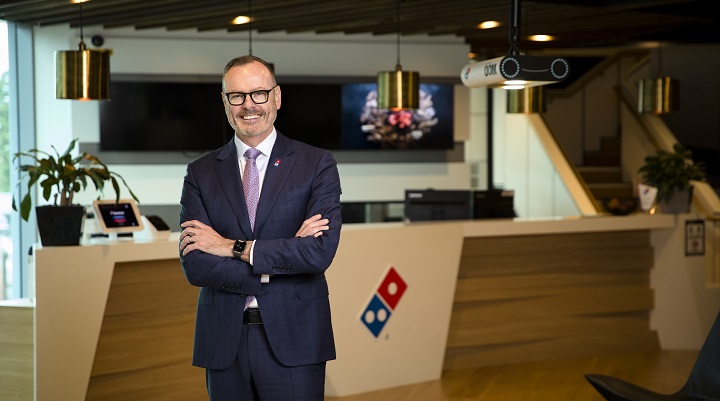Women are slowly but surely climbing the corporate ladder, but at the current rate, we won’t see equal numbers of male and female CEOs in Australia until 2100, according to a recent study by the Workplace Gender Equality Agency and Curtin University. A new initiative aims to speed that up. Launched late last year, 40:40 Vision wants ASX200 listed companies to commit to making their executive teams more gender balanced, with 40 per cent of roles to be held by people identifying as women, 40 per
per cent by people identifying as men and 20 per cent by people of either gender by 2030.
So far, 10 companies have signed up, including Australia’s Domino’s Pizza Enterprises, the largest Domino’s master franchise in the world, with nearly 2500 stores in Australia, New Zealand, Belgium, France, The Netherlands, Japan, Germany, Luxembourg and Denmark.
Here, we asked Domino’s CEO Don Meij about why he’s committed to gender diversity and why other businesses should be too.
Inside Retail: Why did you decide to take the 40:40 Vision Pledge?
Don Meij: At Domino’s, our purpose is to bring people closer. To break down barriers and connect communities through the world’s best bonding food. We believe that to do this, our business must accurately reflect the communities in which we operate – which means having gender equality at all levels, but particularly in our leadership teams.
Late 2020, we announced our goal to have 40 per cent female, 40 per cent male and 20 per cent either gender representation at our Board, Global Leadership and Country Leadership levels by 2030, and have recently thrown further support behind this goal by taking the 40:40 Vision Pledge.
IR: There’s been a lot of controversy in the past about quotas. What’s your view on them?
DM: We don’t see it as a quota, but rather a goal to ensure we are moving in the right direction. Everyone at Domino’s today, male and female, has earned their role through their talent and hard work. And that isn’t going to change. But by setting a goal or ‘target’, we will be able to work towards identifying barriers to the most talented people advancing, or being knocked down, from recruitment throughout their entire career journey.
IR: What’s Domino’s current gender breakdown at the board, global and country leadership levels, and what changes do you need to make to reach the goal of having at least 40 per cent female representation by 2030?
DM: Domino’s has taken a top-down approach to increasing the representation of women in leadership positions. A target was set, and achieved, to increase the number of experienced female executives on our Board of Directors, and we are continuing to work towards our goal of achieving this same gender diversity in other leadership layers of our business. We know we have a lot of progress to make in this space, but we are committed to mapping out a path to progress and sharing our journey along the way.
Editor’s note: Three of the seven people currently on Domino’s board of directors are women.
IR: What do you consider to be Domino’s biggest challenges to achieving its gender diversity target?
DM: I’m proud of the goal we have set, but this is by no means all we will be committing to. This is the next step, not the final step, in our journey. And I’ll be the first to admit that we don’t have all the answers regarding how we will get there… yet. But we need to start somewhere and are committed to working with internal and external stakeholders to share ideas, track progress and get better, together. Because ultimately, doing the right thing matters.
IR: What would you say to other businesses to encourage them to take the 40:40 Vision Pledge?
DM: Take the pledge. Not just because it’s the right thing to do, but because creating a diverse, inclusive organisation and culture is smart business. At Domino’s, it’s the differences in who we are, and how we think, that makes our business stronger. And I guarantee you, it will make your business stronger too. We look forward to helping drive this change not only in Australia, but around the world, as we work towards a more diverse and inclusive future.

